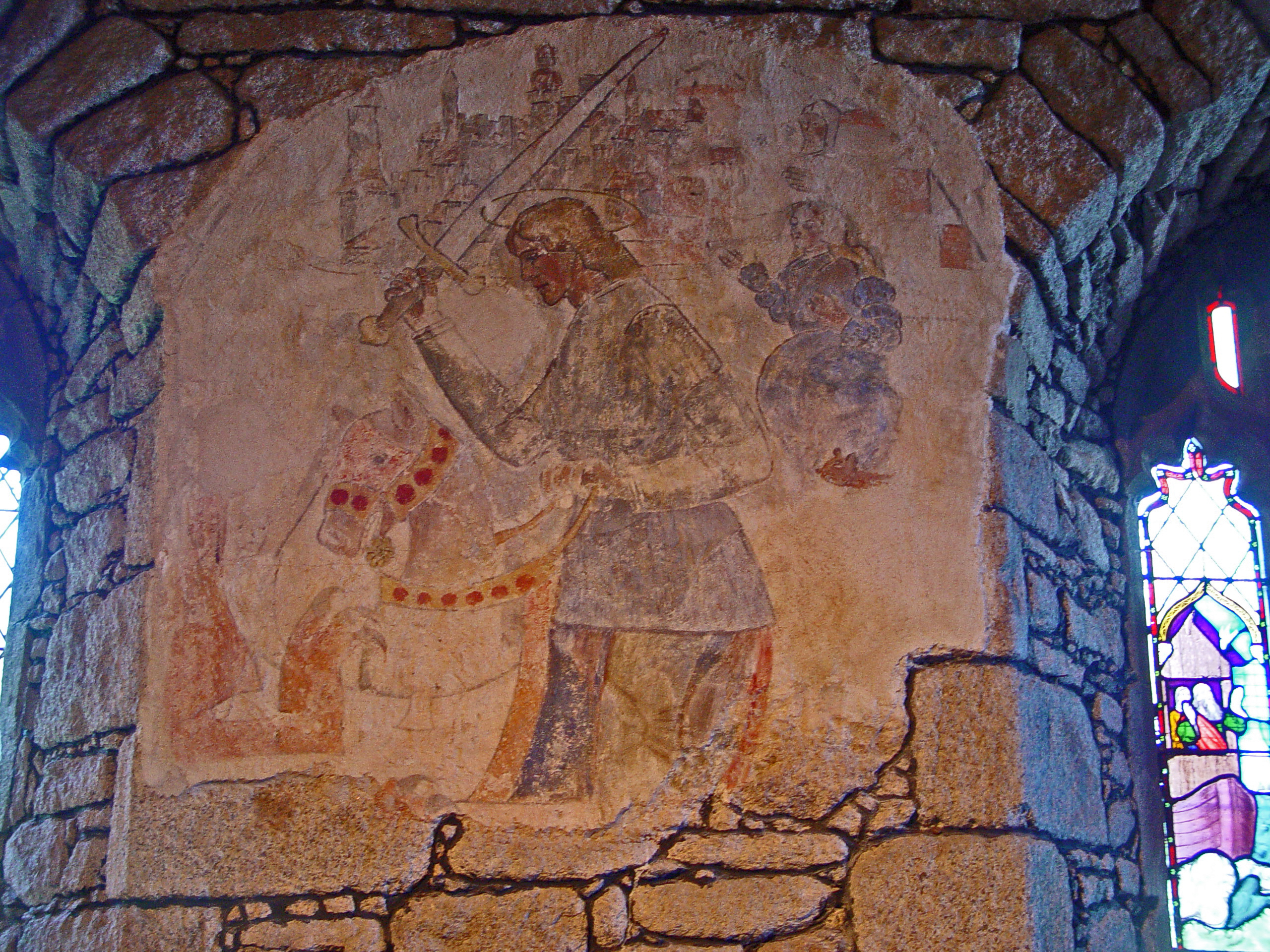Finto Fresco on:
[Wikipedia]
[Google]
[Amazon]
 Fresco-secco (or a secco or fresco finto) is a
Fresco-secco (or a secco or fresco finto) is a
 *
*
The fresco technique
 Fresco-secco (or a secco or fresco finto) is a
Fresco-secco (or a secco or fresco finto) is a wall
A wall is a structure and a surface that defines an area; carries a load; provides security, shelter, or soundproofing; or, is decorative. There are many kinds of walls, including:
* Walls in buildings that form a fundamental part of the supe ...
painting
Painting is the practice of applying paint, pigment, color or other medium to a solid surface (called the "matrix" or "support"). The medium is commonly applied to the base with a brush, but other implements, such as knives, sponges, and ...
technique where pigments mixed with an organic binder and/or lime
Lime commonly refers to:
* Lime (fruit), a green citrus fruit
* Lime (material), inorganic materials containing calcium, usually calcium oxide or calcium hydroxide
* Lime (color), a color between yellow and green
Lime may also refer to:
Botany ...
are applied onto a dry plaster
Plaster is a building material used for the protective or decorative coating of walls and ceilings and for Molding (decorative), moulding and casting decorative elements. In English, "plaster" usually means a material used for the interiors of ...
. The paints used can e.g. be casein paint
Casein paint, (or cassein) derived from milk casein (milk protein), is a fast-drying, water-soluble medium used by artists.
Description
It generally has a glue-like consistency, but can be thinned with water to the degree that fits a particular ar ...
, tempera, oil paint
Oil paint is a type of slow-drying paint that consists of particles of pigment suspended in a drying oil, commonly linseed oil. The viscosity of the paint may be modified by the addition of a solvent such as turpentine or white spirit, and varn ...
, silicate mineral paint. If the pigments are mixed with lime water or lime milk and applied to a dry plaster the technique is called lime secco painting.
The secco technique contrasts with the fresco
Fresco (plural ''frescos'' or ''frescoes'') is a technique of mural painting executed upon freshly laid ("wet") lime plaster. Water is used as the vehicle for the dry-powder pigment to merge with the plaster, and with the setting of the plaste ...
technique, where the painting is executed on a layer of wet plaster.
Because the pigments do not become part of the wall, as in buon fresco
Buon fresco () is a fresco painting technique in which alkaline-resistant pigments, ground in water, are applied to wet plaster.
It is distinguished from the fresco-secco (or ''a secco'') and finto fresco techniques, in which paints are applied t ...
, fresco-secco paintings are less durable. The colors may flake off the painting as time goes by, but this technique has the advantages of a longer working time and retouchability. In Italy, fresco technique was reintroduced around 1300 and led to an increase in the general quality of mural painting. This technological change coincided with the realistic turn in Western art and the changing liturgical use of murals.
The treatise ''Silparatna'' by Kumaradeva (8th century) gives an account of the fresco-secco painting technology in detail. According to this text, a picture should be painted with appropriate colours, along with proper forms and sentiments ( rasas), and moods and actions (''bhavas''). White, yellow, red, black and terre verte are pointed out in the text as pure colors. Different shades were also prepared from these original colors. Five types of brushes with various shapes and size (flat, long, medium, etc.) made of animal hair and grass fibre are also recommended.
Specialist painter and decorators still use this technique to great effect in the world of interior design e.g. faux marble.
Notable fresco-secco artists
*Giotto
Giotto di Bondone (; – January 8, 1337), known mononymously as Giotto ( , ) and Latinised as Giottus, was an Italian painter and architect from Florence during the Late Middle Ages. He worked during the Gothic/Proto-Renaissance period. Giot ...
* June McEwan, Scottish artist who recreates historic Scottish interiors.
* Beohar Rammanohar Sinha, artist from India whose frescoes ornamentate the walls and gigantic dome of the ''Shaheed-Smarak'' or India's Martyrs' Memorial Auditorium. Episodes, accomplishments and landmark-events in India's struggle for independence are depicted.
 *
* Rudolph F. Zallinger
Rudolph Franz Zallinger (; November 12, 1919 – August 1, 1995) was an American-based Austrians, Austrian-Russians, Russian artist. His most notable works include his mural ''The Age of Reptiles'' (1947) at Yale University's Peabody Museum of Na ...
- whose '' Age of Mammals'', a mural painted from 1961 to 1967 on the south wall of the Yale Peabody Museum of Natural History, is painted in this style.
See also
*Art movement
An art movement is a tendency or style in art with a specific common philosophy or goal, followed by a group of artists during a specific period of time, (usually a few months, years or decades) or, at least, with the heyday of the movement defin ...
* Creativity techniques
* List of art media
Arts media is the material and tools used by an artist, composer or designer to create a work of art, for example, "pen and ink" where the pen is the tool and the ink is the material. Here is a list of types of art and the media used within those ...
* List of art movements
* List of most expensive paintings
* List of most expensive sculptures
* List of art techniques
A ''list'' is any set of items in a row. List or lists may also refer to:
People
* List (surname)
Organizations
* List College, an undergraduate division of the Jewish Theological Seminary of America
* SC Germania List, German rugby union ...
* List of sculptors
External links
The fresco technique
References
Fresco painting Painting techniques {{Painting-stub